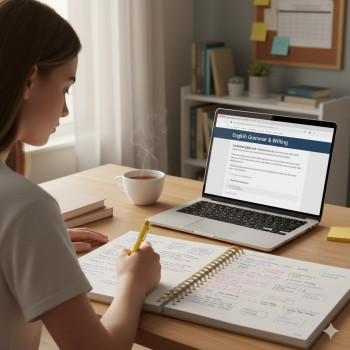Why geometry still matters on the Digital SAT in 2025
When the SAT went digital, a lot of students wondered whether geometry would fade away. The short answer: no. Geometry remains a meaningful slice of the Math section—compact, high-leverage, and refreshingly concrete. In 2025 you’ll still see lines, angles, area and volume, circle basics, and right-triangle trigonometry. What changes are mostly about format and pacing: the delivery is on screen, there are adaptive modules, and you’ll use digital tools instead of paper. But the underlying math and the kinds of reasoning the test rewards are remarkably consistent.
At-a-glance: What geometry topics to prioritize
Think of the geometry content on the SAT as a tight, high-impact toolkit. Mastering a few concepts and familiar problem types gives you outsized returns on your score.
Core topics that still appear regularly
- Lines, angle relationships (parallel lines, transversals, supplementary/complementary angles)
- Triangles: classification, congruence basics, special right triangles, angle-sum reasoning
- Right triangles and basic trigonometry (sine, cosine, tangent — mostly applied to solve for side lengths or angles)
- Circles: radius/diameter, circumference, arc/central angle relationships, inscribed angles, basic sector and arc-length ideas
- Area and perimeter for polygons; area and circumference for circles
- Surface area and volume for common solids (cylinders, cones, spheres, rectangular prisms) and composition problems
- Coordinate geometry: slopes, distance formula, midpoint, equation of lines, area via coordinates
- Basic geometric constructions and reasoning in context (word problems with geometry embedded in real-world scenarios)
Less common—but still possible—topics
- Similar triangles in ratio contexts (scaling, shadow/sightline problems)
- Some 3D visualization questions (interpreting nets, cross-sections)
- Trigonometric ratios used with contextual data (e.g., heights and distances)
How geometry is distributed on the Digital SAT
Geometry and trigonometry sit inside the broader math mix. In practical terms, expect roughly 5–7 geometry/trig questions across the test modules. That might sound small, but these are often straightforward point-earners if you prepare efficiently. The digital format may present them with interactive figures (you can zoom or toggle), but the math doesn’t get trickier—practice and an organized toolkit will carry you through.
Concrete strategies: how to make geometry predictable
Geometry rewards clear thinking, diagram-reading, and clean arithmetic. Here are strategies that turn surprise into predictability.
1. Read the figure first, then the question
Your eyes are the fastest tool. Scan the diagram, note marked angles, tick marks for equal segments, and labels. Sometimes a quick annotation—write an angle measure or mark a right angle—clarifies the route to the answer.
2. Memorize core formulas, but understand them
Instead of doggedly memorizing dozens of formulas, lock down a few essentials and practice applying them until they feel intuitive.
- Triangle area: A = (1/2)bh
- Circle area and circumference: A = πr^2, C = 2πr
- Volume: prism (V = base area × height), cylinder (πr^2h), cone (1/3 πr^2h), sphere (4/3 πr^3)
- Pythagorean theorem: a^2 + b^2 = c^2
- Trigonometric ratios for right triangles: sin = opp/hyp, cos = adj/hyp, tan = opp/adj
3. Use algebra as your geometry partner
Many problems collapse to setting up a linear equation. Label unknowns, translate relationships to algebraic expressions, and solve. The Digital SAT’s calculator tool can help with arithmetic, but the setup—the algebraic model—is your job.
4. Work with units and scale
If a geometry problem gives a scale, area change with scale, or asks about units (e.g., converting inches to centimeters), treat units like a shadow-check. If your units don’t match the answer choice, you likely made a mistake.
Example walkthroughs (realistic SAT-style problems)
Below are concise walkthroughs that demonstrate the methods above. Try to do the first pass on your own, then compare approaches.
Example 1 — Triangle and algebra
Problem idea: Two angles in a triangle are given as (3x + 10)° and (5x − 20)°. What is the third angle?
Approach: Sum of angles = 180°, so third = 180 − ((3x+10) + (5x−20)) = 180 − (8x − 10) = 190 − 8x. If context gives x, plug in. If not, maybe the problem supplies that one angle is twice another—then form an equation for x. The pattern: convert geometry language to algebra straight away.
Example 2 — Circle sector area
Problem idea: A circle has radius 6; a central angle of 60° defines a sector. What is the area of the sector?
Approach: Sector area = (θ/360) × πr^2 = (60/360) × π × 36 = (1/6) × 36π = 6π. Quick, formula-driven, and exact answers are often preferred on the SAT.
Example 3 — Right triangle trigonometry
Problem idea: From a point on the ground you look up to the top of a tower with an angle of elevation 30°. If you are 50 meters from the tower base, how tall is the tower (to the nearest meter)?
Approach: tan(30°) = height/50, and tan 30° = 1/√3 ≈ 0.577. So height = 50 × tan(30°) ≈ 50 × 0.577 = 28.9 ≈ 29 meters. On the Digital SAT you might be expected to know common trig values (30°, 45°, 60°) or use the provided on-screen calculator/trig function—practice both.
How to practice geometry effectively for the Digital SAT
Practice beats passive review. But practice that’s targeted beats more practice. Here’s a practical plan you can follow over 6–8 weeks.
6–8 week focused practice plan
- Weeks 1–2: Formula mastery and quick drills (areas, perimeters, surface area, circle basics). Timed 15–20 minute daily drills on flashcards or digital quizzes.
- Weeks 3–4: Core problem types—angles, triangles, coordinate geometry. Do mixed sets of 10–15 problems, focus on diagram reading and algebra setup.
- Weeks 5–6: Trigonometry and 3D solids. Integrate real-world practice questions (heights, sightlines, volumes in context).
- Weeks 7–8: Full timed module practice inside Bluebook or official digital practice. Analyze mistakes, refine time management.
Daily micro-habits that add up
- 15 minutes: quick formula review and two fresh problems from different geometry subtopics.
- 30 minutes 3×/week: practice sets that simulate test pressure (no notes, timed).
- Weekly: one full-length adaptive practice test in Bluebook to practice pacing and the digital interface.
Smart time management on geometry questions
Given there are only a handful of geometry questions, don’t overinvest time on a single one. Use this time strategy:
- 0–30 seconds: Read diagram and question, mark what’s given.
- 30–90 seconds: Set up the math (label unknowns, form equation). If setup is not straightforward, flag to return.
- 90–180 seconds: Complete computation and verify with diagram. If still stuck, make an intelligent guess and move on—you preserve time for heavier algebra or advanced math questions.
Common traps and how to avoid them
The SAT likes to test attention to detail and combined skills. Here are traps that snare students and how to avoid them.
Trap: Misreading the figure
Some diagrams are not drawn to scale. Don’t assume a right angle unless it’s marked. Always use the given measures and markings, not what the picture looks like.
Trap: Forgetting units after scaling
If a problem changes scale (e.g., “figure is enlarged by factor 2”), area scales by factor squared and volume by factor cubed. Write that down explicitly when you see scaling language.
Trap: Overcomplicating with unnecessary formulas
Often a quick similar-triangle ratio or coordinate geometry trick beats heavy algebra. Before launching into long calculations, ask: is there a simpler geometric relation?
Reference table: quick geometry facts for the SAT
| Concept | Formula or Key Fact | When to Use |
|---|---|---|
| Triangle area | A = 1/2 × base × height | Any triangle area problems, including when height is missing (use right triangles or trigonometry to find it) |
| Pythagorean theorem | a² + b² = c² | Right triangles: find missing side lengths |
| Common trig ratios | sin30=1/2, cos30≈0.866, tan30≈0.577; sin45=cos45=√2/2 | Right-triangle problems with angles; quick estimates and exact values |
| Circle area & circumference | A = πr², C = 2πr | Sector, arc-length, circumference, area problems |
| Volume (cylinder & prism) | V = base area × height; cylinder V = πr²h | Volume and composite solid problems |
| Similarity scale | If scale = k, lengths ×k, area ×k², volume ×k³ | Scaling, shadow problems, resizing shapes |
How digital tools affect geometry questions
On the Digital SAT you’ll use the Bluebook app and built-in tools (answer grid, on-screen calculator, and sometimes figure zoom). These tools help, but they also change how you should practice:
- Practice reading diagrams on a screen—zooming changes perception and sometimes reveals tiny labels.
- Be comfortable using the on-screen calculator for trig and for checking algebraic steps quickly.
- Get used to marking up digital diagrams during practice—use the scratchpad efficiently.
How to use official practice and targeted help
The best practice mirrors the test environment. Use official digital practice tests in Bluebook and the test preview to become comfortable. After each practice, analyze mistakes and extract clear lessons: was it a formula lapse, a diagram trap, or a time-management issue?
Where tutoring helps (and how Sparkl fits naturally)
Geometry is one of those subjects where short, focused instruction can dramatically accelerate progress. A tutor can help you spot your recurring errors (for example, misapplying scale or misreading diagrams) and build a personalized plan. Sparkl’s personalized tutoring offers 1-on-1 guidance, tailored study plans, expert tutors, and AI-driven insights that can highlight which geometry subtopics you should prioritize each week. For many students, one or two targeted sessions to fix misunderstandings and refine strategy produces immediate score gains.
Practice problem set (mixed difficulty)
Try these in a quiet 20–30 minute block. Time yourself and use your digital tools like on test day.
- Problem A (easy): A circle has radius 4 cm. What is its area? (Give exact form.)
- Problem B (medium): Two parallel lines are cut by a transversal; one acute angle measures (2x + 10)°, another corresponding angle measures (4x − 20)°. Find x and the acute angle.
- Problem C (harder): A right circular cylinder has height equal to its diameter. Its volume is 72π. What is its radius?
Solutions (brief): A = 16π. B: set 2x+10 = 4x−20 → 30 = 2x → x=15; acute angle = 40°. C: Let radius = r, height = 2r, volume = πr²(2r) = 2πr³ = 72π → r³ = 36 → r = ∛36 ≈ 3.30.
Study checklist before test day
- Memorize and understand core formulas (table above)
- Complete at least three full-length adaptive practice tests under timed conditions
- Review every missed geometry question by reconstructing the solution in your own words
- Practice common trig values and get comfortable using the on-screen calculator
- Consider 1-on-1 tutoring for persistent weak spots—Sparkl’s tailored plans can focus those sessions on exactly what you need
Final thoughts: geometry as low-hanging fruit
Geometry on the Digital SAT in 2025 is concise, consistent, and coachable. Because the test only includes a handful of geometry questions, mastering the essential topics and developing a few reliable strategies will often convert those problems into easy points. Do the focused practice, use the digital practice tools to simulate test conditions, and don’t hesitate to get targeted help if you keep repeating the same mistake. A little geometry fluency goes a long way toward a calmer, more confident test day.
Ready to turn geometry into points?
If you take away one thing from this guide: practice geometry with purpose. Work the core problems until setup is second nature, simulate the digital test a few times, and prioritize clarity over cleverness. If you want a targeted, efficient path to improvement, consider short personalized tutoring sessions that focus only on the geometry topics where you lose points—most students find that tailored help (like Sparkl’s 1-on-1 coaching and data-driven plans) saves more study time than trying to perfect everything at once. Good luck—geometry is beatable, and it’s one of the quickest ways to grow your SAT score.













No Comments
Leave a comment Cancel